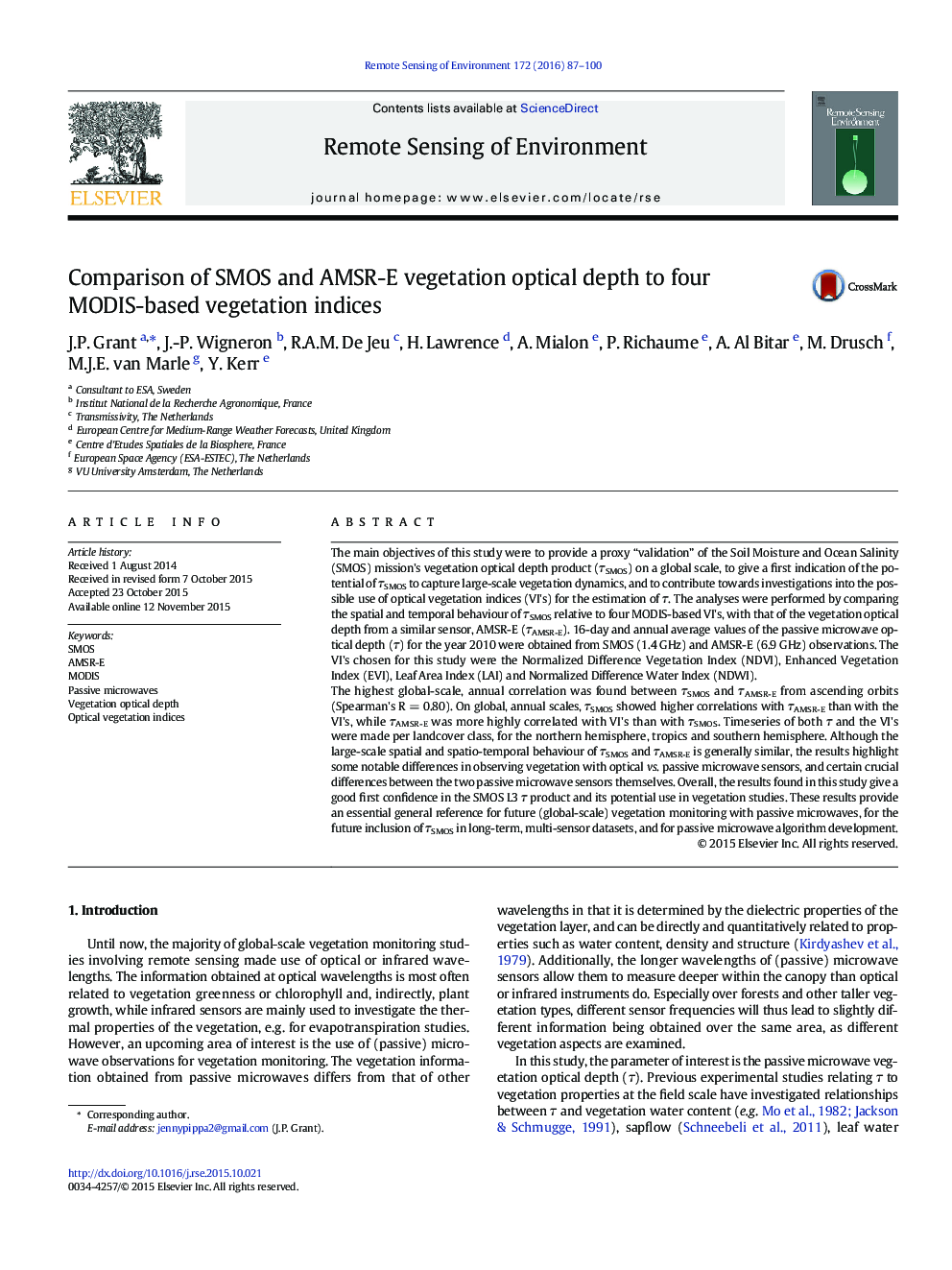| کد مقاله | کد نشریه | سال انتشار | مقاله انگلیسی | نسخه تمام متن |
|---|---|---|---|---|
| 6345715 | 1621228 | 2016 | 14 صفحه PDF | دانلود رایگان |

- First global-scale qualitative evaluation of SMOS Level 3 optical depth (ÏSMOS)
- ÏSMOS and AMSR-E optical depth (ÏAMSR-E) compared to MODIS NDVI, EVI, LAI and NDWI
- Similar spatio-temporal behaviour of ÏSMOS and ÏAMSR-E with respect to MODIS indices
- Results give good confidence in ÏSMOS and its use for vegetation studies.
- Suggestions for future improvement and multi-sensor timeseries integration of ÏSMOS
The main objectives of this study were to provide a proxy “validation” of the Soil Moisture and Ocean Salinity (SMOS) mission's vegetation optical depth product (ÏSMOS) on a global scale, to give a first indication of the potential of ÏSMOS to capture large-scale vegetation dynamics, and to contribute towards investigations into the possible use of optical vegetation indices (VI's) for the estimation of Ï. The analyses were performed by comparing the spatial and temporal behaviour of ÏSMOS relative to four MODIS-based VI's, with that of the vegetation optical depth from a similar sensor, AMSR-E (ÏAMSR-E). 16-day and annual average values of the passive microwave optical depth (Ï) for the year 2010 were obtained from SMOS (1.4Â GHz) and AMSR-E (6.9Â GHz) observations. The VI's chosen for this study were the Normalized Difference Vegetation Index (NDVI), Enhanced Vegetation Index (EVI), Leaf Area Index (LAI) and Normalized Difference Water Index (NDWI).The highest global-scale, annual correlation was found between ÏSMOS and ÏAMSR-E from ascending orbits (Spearman's RÂ =Â 0.80). On global, annual scales, ÏSMOS showed higher correlations with ÏAMSR-E than with the VI's, while ÏAMSR-E was more highly correlated with VI's than with ÏSMOS. Timeseries of both Ï and the VI's were made per landcover class, for the northern hemisphere, tropics and southern hemisphere. Although the large-scale spatial and spatio-temporal behaviour of ÏSMOS and ÏAMSR-E is generally similar, the results highlight some notable differences in observing vegetation with optical vs. passive microwave sensors, and certain crucial differences between the two passive microwave sensors themselves. Overall, the results found in this study give a good first confidence in the SMOS L3 Ï product and its potential use in vegetation studies. These results provide an essential general reference for future (global-scale) vegetation monitoring with passive microwaves, for the future inclusion of ÏSMOS in long-term, multi-sensor datasets, and for passive microwave algorithm development.
Journal: Remote Sensing of Environment - Volume 172, January 2016, Pages 87-100